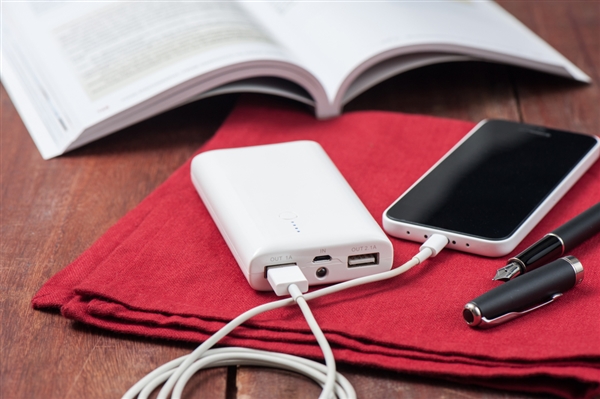During an especially busy day, wouldn’t you like to be able to sit down in a meeting and have your smartphone fully recharged from your power bank by the time the meeting is over? Recharging the ever-larger capacity batteries found in the latest smartphones and tablets usually takes hours from the USB port in your notebook. However, with newer fast charging protocols, such as MaxCharge technology, charging your portable device really can happen in under an hour. Of course, the power bank and its power supply must be designed for this challenge. Therein lays the designer’s dilemma: how do I get more power from the power bank to the portable device’s battery in order to charge it faster?
The answer goes back to the fundamentals: power equals voltage times current. To get more power, you can increase either the voltage or the current or both. The current you can transfer from the power bank to the portable device is usually limited to around 2 to 3A because of the cable’s rating. Cables are rated on current as this corresponds to a temperature rise, voltage drop, and power loss. Too much of any one of these can break the system.
The voltage is limited by the electronics used, however. The power bank must be capable of outputting a higher voltage and the portable device must be able to accept a higher voltage. Using a higher voltage at the same current results in higher power and more energy available to put into the battery. Thus, the battery charges faster.
The bq25892 supports charging a single-cell battery (4.2V) at up to 5A from a 12V input source. This is up to 21W of power delivered to the battery, which is far greater than the 5V at 0.5A (2.5W) of the typical USB 2.0 port. Much faster charging is achieved when using MaxCharge. But what is required in the electronics design to implement this and other fast charging protocols?
When designing a very simple form-factor optimized design which supports faster charging, the power bank’s power supply must cooperate with the fast charger. Figure 1 shows an example implementation in the power bank. The versatile and high power TPS61088 boost converter takes in the power bank’s battery voltage and outputs a selectable 5V, 9V, or 12V to the output connector. The on-board TPS2592AA eFuse provides the necessary output fault protection, while an interface IC provides the required interfacing between the power bank and portable device to set the desired voltage. This is an essential for protecting older portable devices, which cannot accept higher voltages. Using the same boost converter and eFuse for all voltages greatly simplifies the architecture and decreases the bill of materials (BOM) cost.
Figure 1. Block diagram which provides a higher voltage for numerous fast charging protocols from the single-cell battery in a power bank
How fast can your power bank charge your smartphone?


